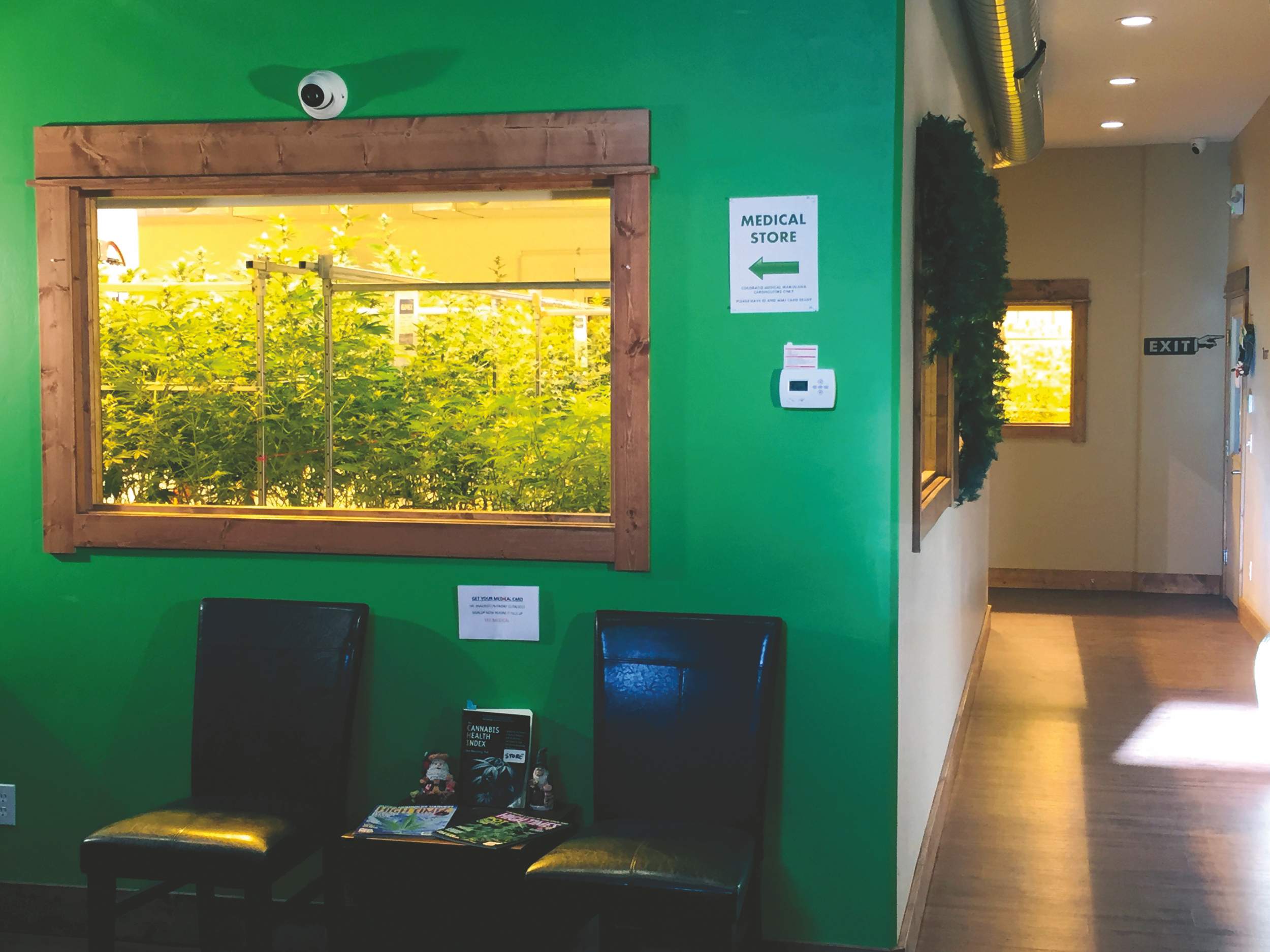Radiation, brothels, bullies, hellfire, and steam, Jeff Ellingson, curator of the Durango & Silverton Narrow Gauge Railroad Museum, can chat you up on all of it. The D&SNG Museum houses a hodgepodge of history ranging from transportation artifacts to taxidermy. It’s free and worth the walk-through, but if you want the inside story, pony up five bucks at the front depot to take a train yard tour.
Ellingson, a man who’s spent 33 years on the railroad, recently led DGO through the Durango & Silverton yard, roundhouse, and museum, dishing dirt on local history.
Weren’t nothing here before the railroad“What people tend to not know is that Durango was a supply town. It was built by the railroad. Durango wasn’t here before the train was here,” said Ellingson as he stood behind the depot on a gray, breezy day. Durango wasn’t first choice, either. The Denver & Rio Grande, with General Palmer himself, first approached Animas City but, “Animas City didn’t want the technology and riff-raff that went along with a modern city.”
It’s easy to think of the railroad as Victorian, retro technology, but General Palmer was a high-tech guy who “… earned about narrow gauge when he was on his honeymoon in England,” said Ellingson. “It could be built more quickly, you don’t have as much to blast out of the mountain, you can have tighter curves.” And, until Palmer’s pal, Andrew Carnegie, built a steel mill in Pueblo, that steel would have been shipped from England.
It was D&RG engineers who planned Durango, not settlers. “They did a pretty good job. The smelter was on the other side of the river. All of the nice neighborhoods and the churches were built along the boulevard, which is (now) 3rd Avenue. The downtown was really segregated. The east side of the downtown was where the proper people were. Women and children would walk on the east side only. The other side of town was all prostitution, brothels, and bad news.” Ellingson added, “In its first five years of being a town, Durango had 60 bars and only two churches.”
What goes on in the roundhouse?A whiff of garage oil greets you at the D&SNG museum. It’s because of the attached goliathan structure, the “roundhouse,” the machine shop that stores and services the locomotives. In the rear, there’s an immense, outdoor turntable. “We can turn it to any track that goes into the roundhouse,” said Ellingson. “We bring engines out to that turntable and line them up for the main line, then send them out to Silverton.”
In 1989, the first roundhouse burned. Ask Ellingson, and he’ll show you the small bit of wall left from the original building. The rest of it, well, “The roof was soaked in coal dust and oil. It went up like you wouldn’t believe.”
Step into the roundhouse and you’ve left the 21st century behind. It’s a locomotive-lined, industrial cavern coated in grit. Bright light washes in from enormous train doors. A mechanical humming is ever-present and shadows cloak workbenches, tables, and tools – all whispering stories at anyone willing to listen.
Looking at the resting locomotives, Ellingson said, “We have seven operating steam engines. They were all built in the 1920s … These engines, we don’t baby them. They’re run as hard today as they were when they were new. A lot of railroads that are tourist railroads will bring a steam engine out on a weekend or special days, but we’re the only place in the world that lines these up, three a day. We put 100 miles on them up steep grades at maximum tonnage … There isn’t another place like this.”
In the middle of the warehouse, a locomotive sits stripped to the bolts. It’s stationed over a pit where mechanics can work. “This is what a skeleton of a locomotive looks like. Every 10 years, we have to take a locomotive and tear it apart.”
WWII machinery making trainsA short walk away and Ellingson gestured to a vast machine shop. “This is like a working museum. It’s where we build all of our parts. We can’t buy parts, so we make them all here.”
The room is filled with machines bigger than tiny houses. Two men in hardhats work at one. Nearby, there are enormous wheels that weigh about 13,000 pounds each. They’re from the 476, the stripped-down skeleton locomotive.
“You and me, we’re both humans, but our parts aren’t necessarily interchangeable. It’s the same with a locomotive,” said Ellingson. “Even though they are the same model, make, and built the same year, you can’t take parts off one locomotive and put them on another.”
“The machines in here are all from the 1930s or 1940s. We don’t have any computers in here … These machines, in WWII, were all cranking out Jeeps and B-17s and machine guns … To be truly authentic, we wanted to manufacture our parts with machines that were the same age as our locomotives.”
Authenticity doesn’t stop in the machine shop. “People ask if we have speedometers in the cab and we don’t. We listen. We can tell how fast the engine is going by the clickety-clack on the rails. I can tell you what 18 mph sounds like.”
Weirdness in the roundhouse at nightAt night, only two people work in the roundhouse, engine watchmen, keeping the engines hot. “We keep fires in them. When they’re in service, they’re hot all the time. The less expanding and contracting you have of the steel, the better it is for the engine.
“The engine watchmen talk about chunks of coal flying around out of nowhere,” said Ellingson. When you work in a place that has 135 years of history, there’s bound to be a bit of the unexplainable.
“We have a fellow we call ‘Legs.’ Legs doesn’t have any legs. He fell between the cars on a moving freight train behind the Durango Herald in 1910. The train ran him over, cut his legs off [Ellingson slices his hand across his thighs]. He bled to death before he could get to the hospital. Horrible. The guys report hearing hands and a torso dragging on the ground.” He adds, “I used to be really skeptical of paranormal stuff, thought it was stupid, didn’t believe in it. But, after years of being around the unexplainable, you say, ‘Something’s going on.’”
The roundhouse is a manufacturing labyrinthContinuing the tour, Ellingson exited a roudhouse door, only to open another. Behind it, a carman named Eric Bunn worked on jumbo trucks, the parts that roll under a passenger car, swivel, and carry the weight. “These guys work on over 50 passenger cars and keep them in excellent condition. A lot of this is as old as the railroad itself. They’re taken apart and inspected every year and anything that is found defective or worn out is replaced,” said Ellingson.
Carmen check the train in the morning and again at night. They pay special attention to the brakes. “It’s all downhill from Silverton,” said Ellingson, “Except a few spots, the brakes are on the whole way down. That puts a lot of wear and tear on ’em.”
Bunn is also an engineer. “Me and him have been on a few missions together over the years,” said Ellingson. “When you go out on the train, you’re on an adventure. You really never know what’s going to happen.”
“You’re on your own out there, in the hills,” added Bunn.
“Three-hundred people from all over the world that think this might be a Disneyland ride,” said Ellingson. “They don’t quite get that they are in the wilderness, and if something goes wrong, we have to rescue ourselves. “
The D&SNG strives to provide a safe environment, but Mother Nature has her own plans. Rockslides, mudslides, and flash floods are real possibilities on route. Ellingson himself was on the tracks the day of a rockslide, which “Came down and took the tracks out. We stopped in time and had to transfer all of our folks to another train.”
A walk past locker rooms, offices, and a passenger car, Ellingson motioned to a side room, “This is where we paint the cars,” he said, pointing out an 1880s passenger car getting an entirely new interior and paint job.
Hisses and sizzles slunk from a welding shop. Near it, a woodworking shop houses stacks of works in progress.
Behind the roundhouse, across from Smelter MountainEllingson pointed across the train yard, over the highway, and to the dog park. It’s where the smelter used to be. “That scar over there was where all the gold, silver, copper, lead, and zinc were processed. There were five blast furnaces that ran 24 hours a day.”
About 200 folks worked at the smelter until the Great Depression, when it went out of business. The railroad and Durango were hurting until WWII. “Durango was founded partially because there’s so much coal here, but there’s also a lot of uranium. [In 1942, the smelter] went from processing gold and silver to crushing uranium with the stamp mills. A lot of Durangoans were working over there, happy to be working, but nobody told them about the radiation. They would come home covered in dust, or yellowcake, and hug their wives, their kids. Their homes became contaminated.”
For decades, parents, like Ellingson’s, warned kids from sneaking around the eventually-abandoned smelter. “Nothing would grow there because it was radioactive. When the wind would blow, that dust and junk would drift over town.” It wasn’t until the early ’90s that the smelter was demolished and the radiation dealt with. “They tore down the houses of people that used to work there and removed the soil, too. They took three inches of soil off of here, too,” Ellingson said, motioning to the entire rail yard.
“The uranium they processed over there was used in the first atomic bomb during WWII. In the 1960s, they were still processing uranium, but for use in the Cold War. A lot of people don’t know that about Durango.”
And then …
Ellingson led DGO staff back into the D&SNG Railroad Museum. The ghost story he told us inside of a sleeper car from 1900 is for another time …













